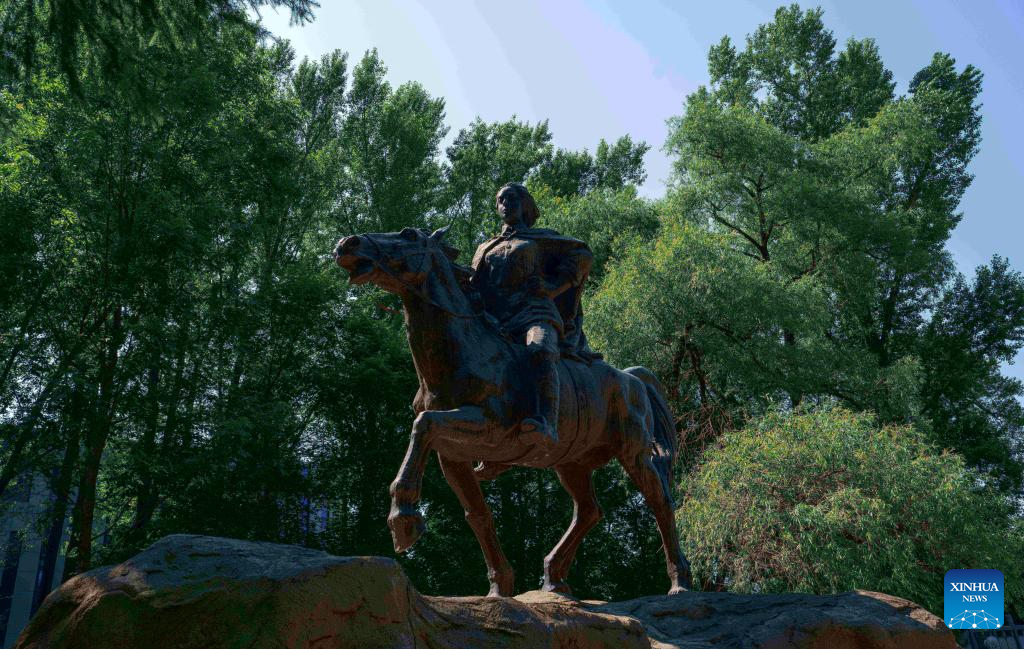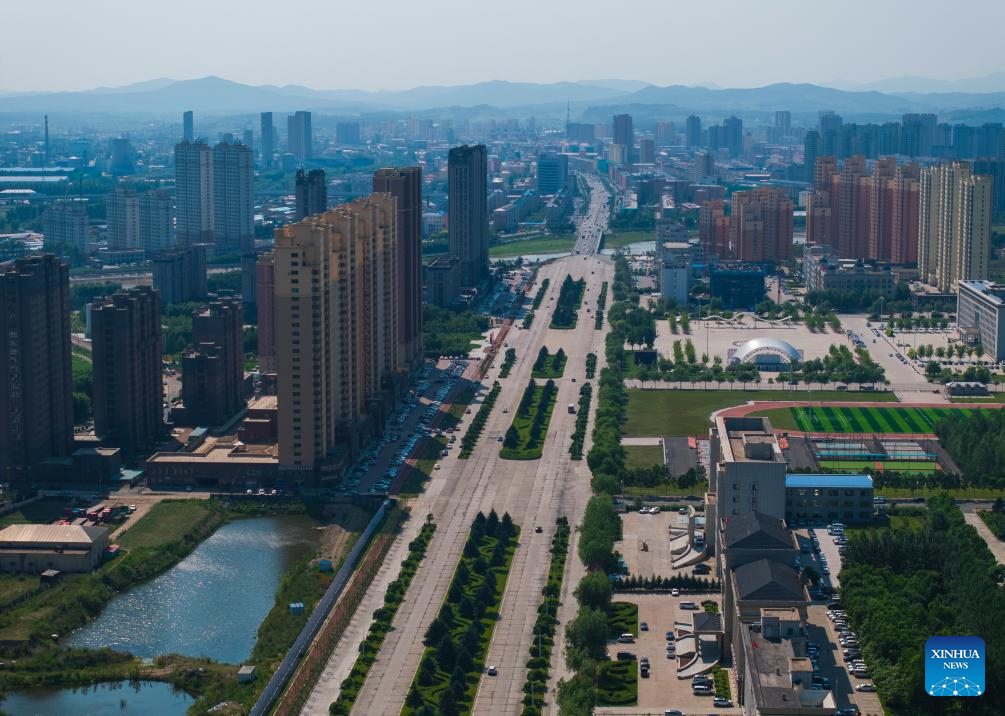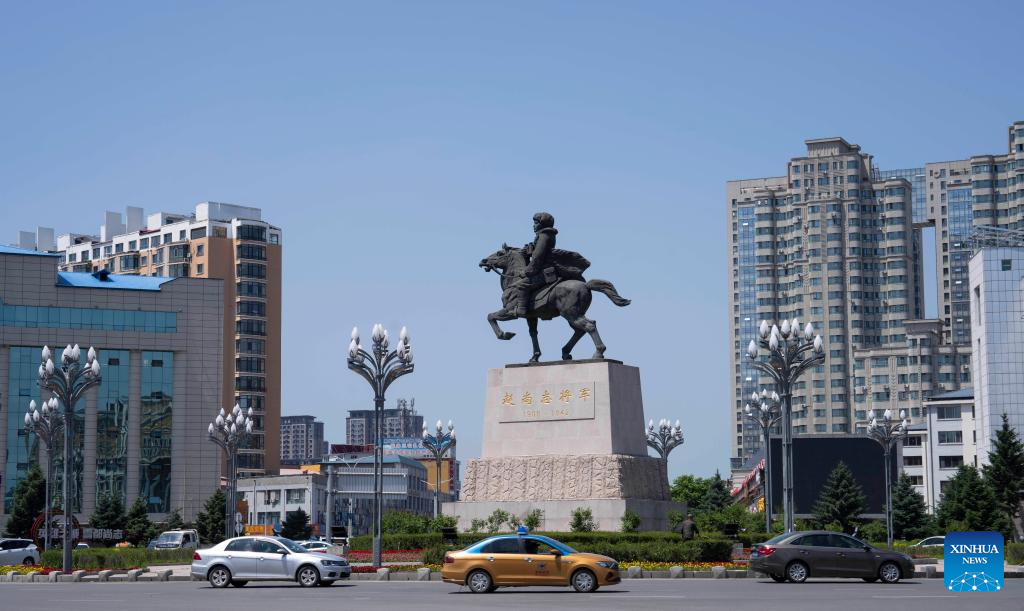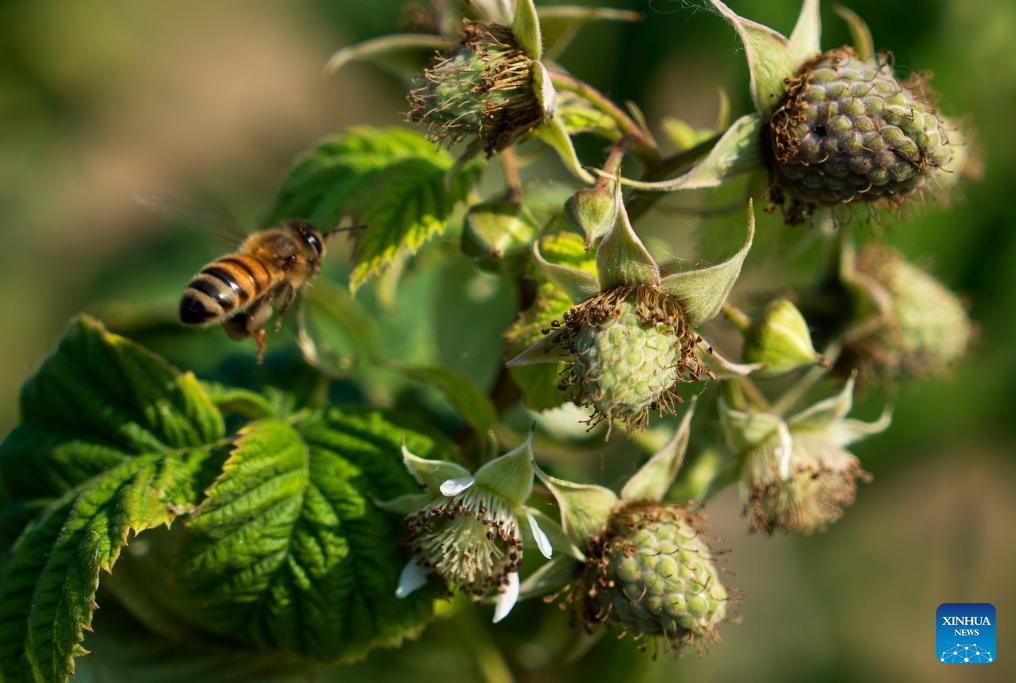Across China: The modern-day battle of a heroic Chinese city
Source: Xinhua
Editor: huaxia
2025-06-25 20:15:00

This photo taken on June 23, 2025 shows a statue of Zhao Yiman, a revered war heroine, in the city of Shangzhi, northeast China's Heilongjiang Province. (Xinhua/Cai Yang)
HARBIN, June 25 (Xinhua) -- In the fertile black soil of northeast China's Heilongjiang Province, where traces of a turbulent past remain, the city of Shangzhi is pursuing a different kind of struggle, one for growth, grounded in resilience and the land itself.
Sunlight filters through the trees at a memorial park in the city, a quiet corner that bears the weight of sacrifice. A winding stone path leads visitors to the site where Zhao Yiman, a revered war heroine, was captured after being wounded in a battle against Japanese invaders 90 years ago.
As one of the most lionized female revolutionary martyrs, Zhao Yiman was a pivotal figure in northeast China's anti-Japanese resistance. Captured in 1935, she endured brutal torture but divulged nothing to the enemy. Executed at 31 in 1936, her final words to her young son urged pride in her sacrifice for the nation.
In the city of Shangzhi, stories about heroes like Zhao Yiman and Zhao Shangzhi, another leader in the war of resistance against Japanese aggression, have become part of the land's identity.
Shaped by hardship and nourished by fertile soil, Shangzhi has embarked on a transformative campaign, turning its once war-scarred landscape into a bountiful "hometown of red raspberries." The area's clean environment and sharp diurnal temperature shifts have proven ideal for berry cultivation.
Today, berry cultivation, particularly red raspberries and blackcurrants, is a signature industry driving Shangzhi's rural revitalization -- its own modern-day "battle" for sustainable prosperity. With 3,000 hectares of berry plantations, the city has established a modern industrial chain that covers stages from seedling breeding and cultivation to quick-freezing processing and sale.
Berries are cultivated across all 17 townships in Shangzhi City, generating an annual output value of approximately 500 million yuan (about 69.8 million U.S. dollars), said Zhang Chenghai, deputy director of the city's agriculture and rural affairs bureau. Thanks to their high quality, about 70 percent of the city's raspberries and blackcurrants are exported to markets in Russia, Brazil, the European Union and North America.
According to Zan Qinglin, a leading official of Chengxi Village, the village has invested over 7 million yuan in the development of its 1,500-mu raspberry production base. In 2024, its raspberry yield reached 80 tonnes, generating 800,000 yuan in revenue and creating jobs for over 100 people.
And technological innovation has brought new momentum to the industry. "Shangzhi Red Raspberry" is a term that now enjoys national geographic indication protection, and local berry-processing enterprises are expanding, turning raw fruit into higher-value products such as anthocyanin extract and not-from-concentrate (NFC) juice.
"We're planning to attract business partnerships to upgrade our production lines, expand output and extend our industrial chain, making the raspberry industry a golden key for rural revitalization," Zan said.
This transformation from a "red" revolutionary base to a hub for red raspberry cultivation is intrinsic to Shangzhi's soul. The legacy of local heroes graces its streets, parks, and schools, anchoring the city to its resilient past and enduring hopes for the future.
In Shangzhi, the hush of the memorial site and the hum of work in the berry fields are not contradictions, but verses in the same unbroken song that tells of a quiet resilience rooted in the black soil, where memory feeds the earth and the sweet, sun-soaked fruit thrives. ■

An aerial drone photo taken on June 23, 2025 shows a view of the city of Shangzhi, northeast China's Heilongjiang Province. (Xinhua/Cai Yang)

This photo taken on June 23, 2025 shows a statue of Zhao Shangzhi, a leader in the war of resistance against Japanese aggression, in the city of Shangzhi, northeast China's Heilongjiang Province. (Xinhua/Cai Yang)

A bee hovers around a plant at an agricultural industry park in the city of Shangzhi, northeast China's Heilongjiang Province, June 23, 2025. (Xinhua/Cai Yang)



